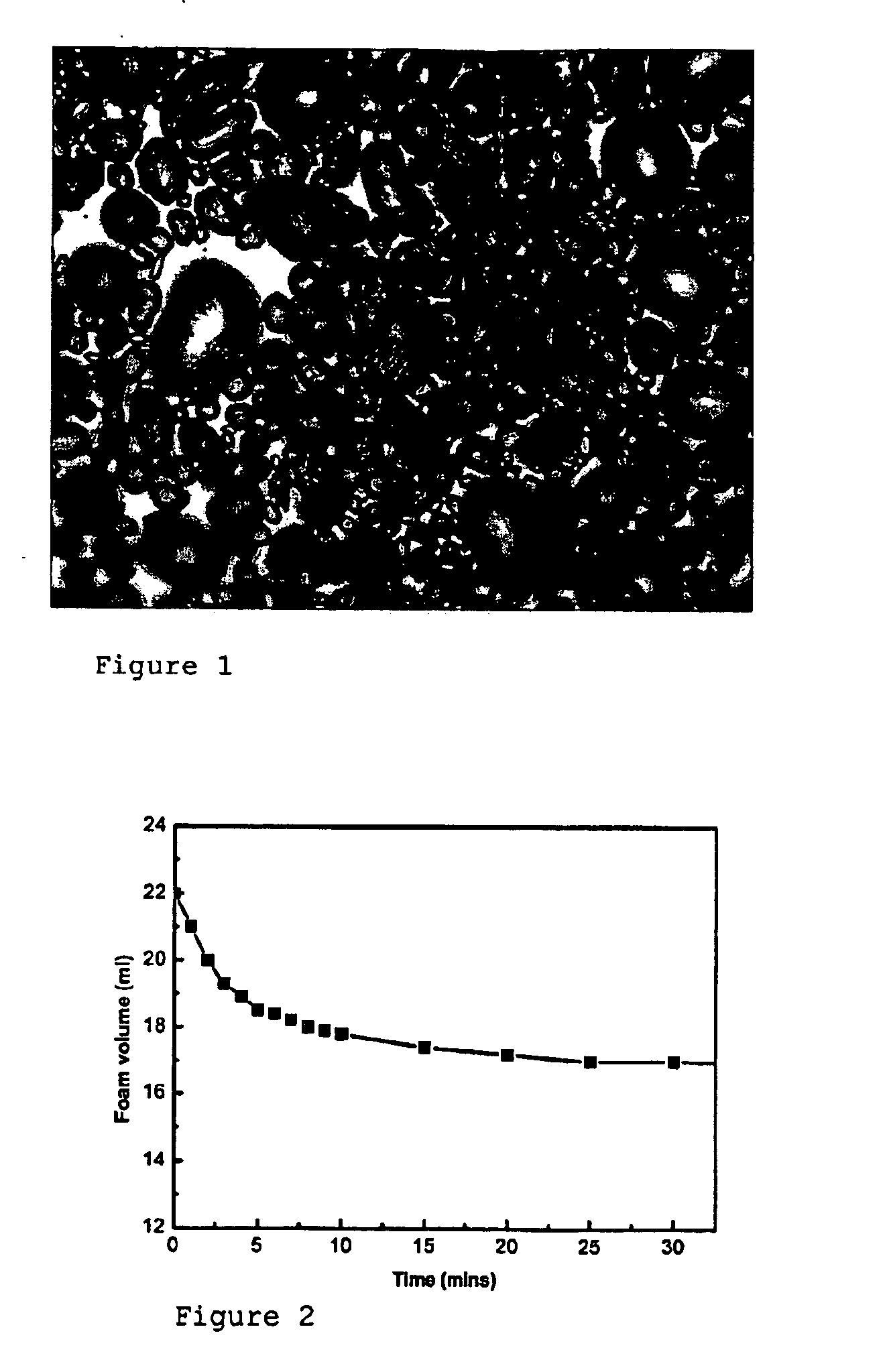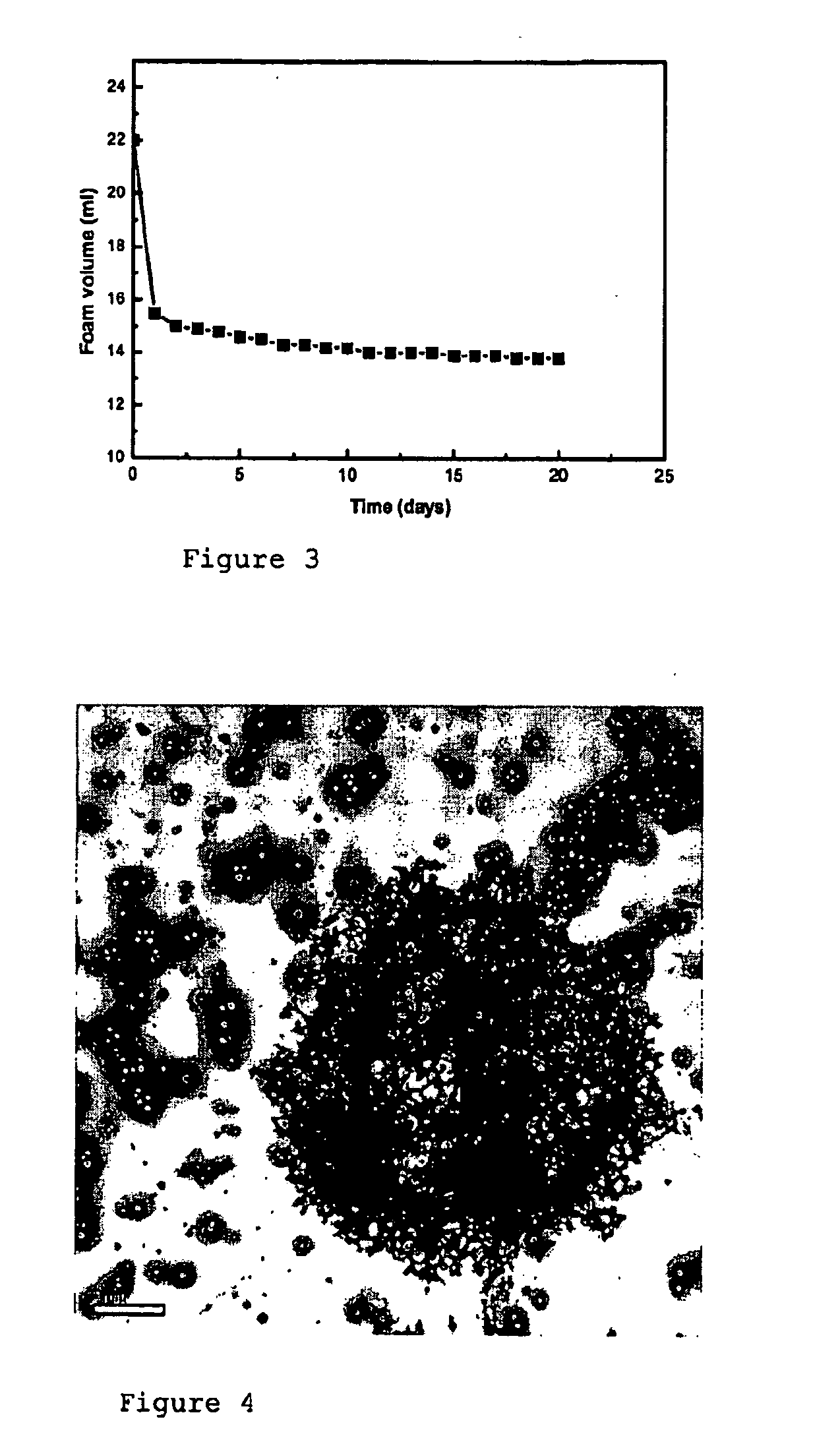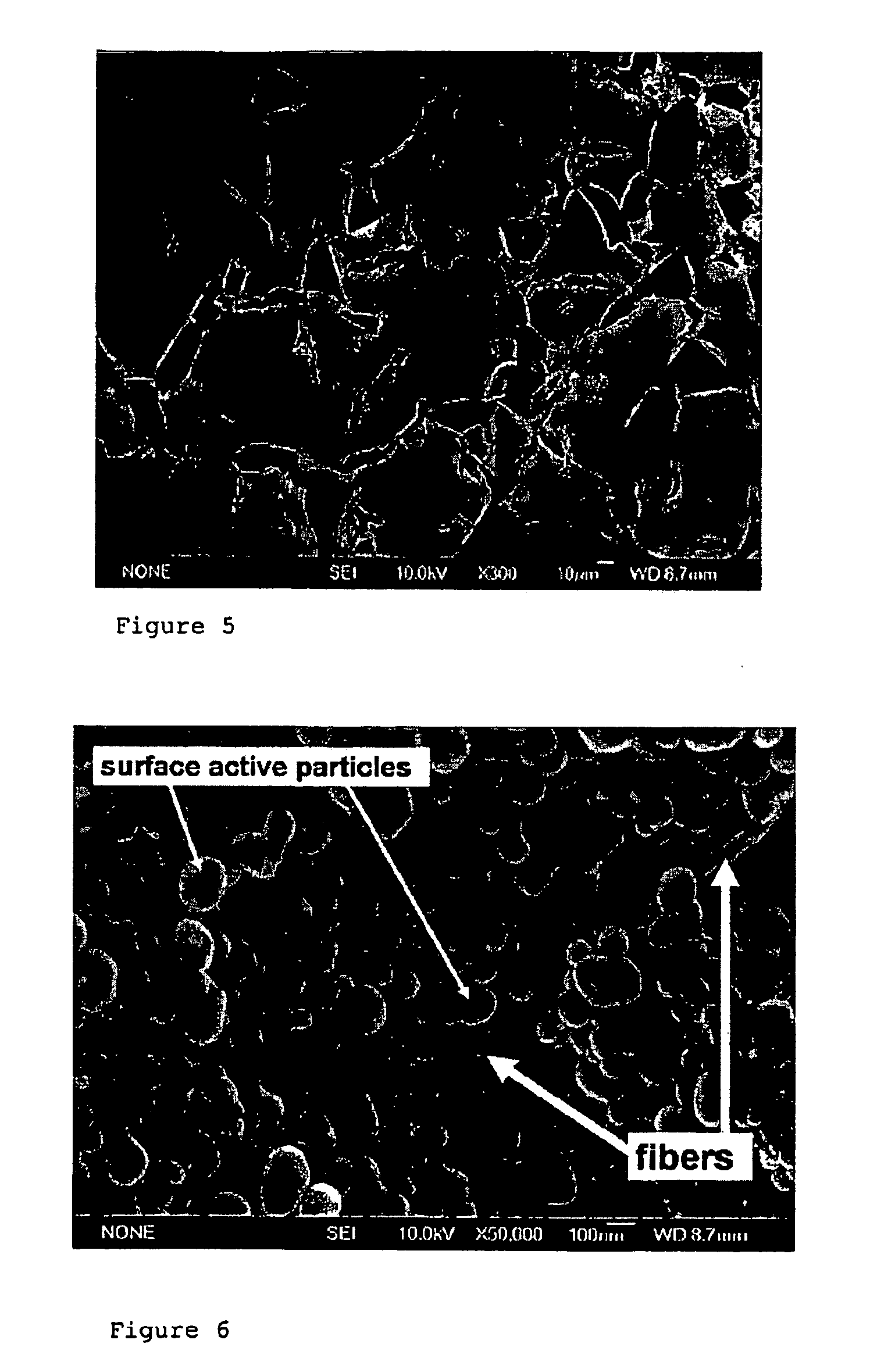Aerated food product and process for preparing it
a technology for aerated food products and food products, applied in the field of aerated food products, can solve the problems of increasing the number of bubbles close to the upper surface, depleting the bubbles at the bottom, and unstable aerated food products,
- Summary
- Abstract
- Description
- Claims
- Application Information
AI Technical Summary
Benefits of technology
Problems solved by technology
Method used
Image
Examples
example 1
MCC-EC Complex Formed by In-Situ Interaction
[0084]Pure microcrystalline cellulose (MCC) fibre particles were prepared as follows: 15 g of medical absorbent cotton (Shanghai Medical Instrument Co. Ltd, China) was dispersed into 150 ml of 50% (V / V) sulfuric acid in a 400 ml beaker. Subsequently the beaker was put into a water bath with the temperature of 30° C. The hydrolysis will last for 6.5 hours with continuous magnetic stirring. The resultant mixture was cooled down and diluted by 850 ml of deionised water. After 24 hours, microcrystalline cellulose (MCC) fibres would settle down to the bottom of the beaker, and the supernatant was removed and replaced by the same volume of deionised water. This purification process was repeated for 5 times. Then the MCC suspension was transferred into a dialysis tube to remove the acid and impurities completely by dialyzing in water. This procedure was repeated for several times until the pH value of the water in the MCC dispersion was neutral (...
example 2
[0089]4.0 g mica (SCI-351, 10˜100 μm, Shanghai Zhuerna High-tech Powder Materials Co., Ltd. China) was dispersed in 40 ml acetone solution containing 0.2 g ethyl cellulose (EC, 10 cps, ethoxy content 48%, Aldrich). After 5 minutes sonication, 160 ml deionised water was quickly added into the dispersion under strong stirring. 5 minutes later, most of EC particles precipitated out from acetone and deposited onto the surface of mica. After filtration and aging in 80° C. vacuum oven for 4 hours, Mica was successfully modified by ethyl cellulose.
[0090]The modified mica showed good foamability and foam stability. 0.5 g modified mica was dispersed in 10 ml water containing 0.75 wt % ethanol, and then the dispersion was transferred to 25 ml cylinder. The overrun reached 25% after strong shaking by hand for 30 seconds. One week later, the foam still remained stable.
[0091]Functional CaCO3 rods could be used to improve the foam ability and foam stability of modified mica. CaCO3 rods (Qinghai H...
example 3
[0093]In the same way as described in Example 1, 200 ml dispersion containing 1% EC was prepared. Two grams of MCC, prepared according to the procedure described in example 1, was added as dry matter setting the MCC-concentration to 1%. This dispersion was then aerated by using a Kenwood kitchen mixer operating at maximum power for 2 minutes. This resulted in a total foam volume of approximately 2000 ml. The foam obtained concentrated by liquid drainage, in a similar manner as the foam obtained by shaking (see example 1). After one day the final air content of approximately 99% was reached. This concentrated foam was stable against disproportionation for at least 6 months at ambient or chilled conditions. FIG. 9 shows a microscopic image of air bubbles in the whipped MCC-EC-foam containing 1 wt % EC and 1 wt % MCC. The bubble surface appears wrinkled, which is an indication of a strong elastic layer at the air / water interface composed of EC / MCC which provides the resistance against ...
PUM
 Login to View More
Login to View More Abstract
Description
Claims
Application Information
 Login to View More
Login to View More - R&D
- Intellectual Property
- Life Sciences
- Materials
- Tech Scout
- Unparalleled Data Quality
- Higher Quality Content
- 60% Fewer Hallucinations
Browse by: Latest US Patents, China's latest patents, Technical Efficacy Thesaurus, Application Domain, Technology Topic, Popular Technical Reports.
© 2025 PatSnap. All rights reserved.Legal|Privacy policy|Modern Slavery Act Transparency Statement|Sitemap|About US| Contact US: help@patsnap.com



